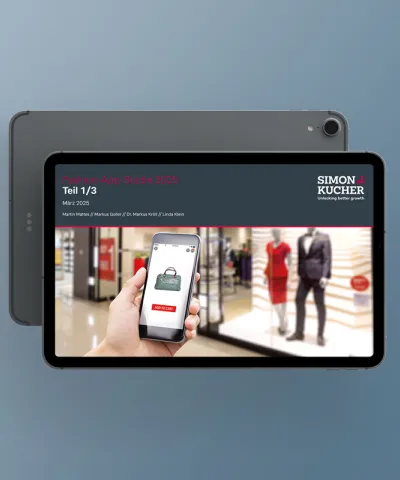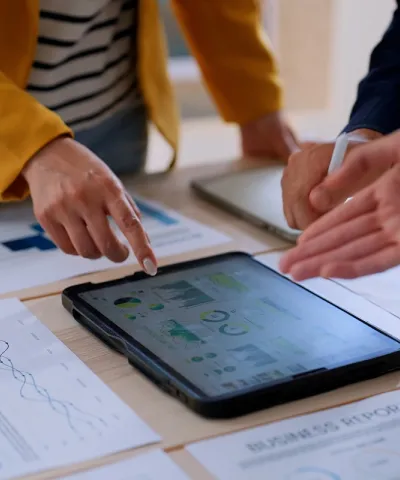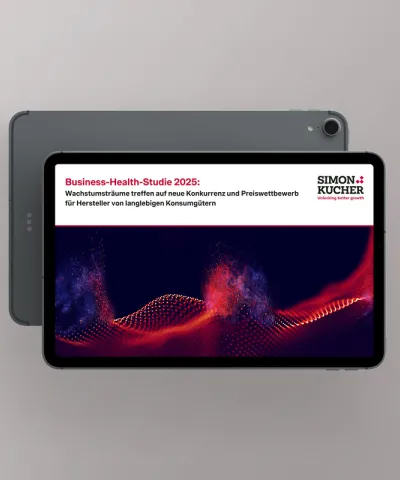Massive demand spikes and sudden shifts in consumer behaviors during the pandemic strained and stressed sales organization structures in food and beverage (F&B) and consumer packaged goods (CPG). Now that COVID-19 is behind us, how should sales leaders approach optimizing their sales teams to drive growth? What forces of change did the pandemic unleash and how will they reshape the industry?
As the dust settles in the wake of the pandemic, we are getting a clearer picture of how COVID-19 has transformed the channel and market landscape for F&B and CPG. Sales leaders who held off making bold advancements due to uncertainty during the pandemic, are now ready to take more concrete steps to optimize their organizations for a new reality.
However, the pandemic unleashed powerful forces that have far-reaching implications for how sales teams should be structured, sized, and equipped. The rules for success have changed, and sales organization structures from pre-pandemic times have become out-of-date and out-of-shape.
In the following discussion we call attention to six critical forces impacting F&B and CPG sales organizations: the shift in channel mix, the evolving role of the retail footprint, digitization of the route-to-market (RTM), neighborhood and occasion migration, major metro migration, and the rapid enablement of tech sell.
We tackle these forces of change individually, discuss how they will impact sales teams, and put it all together to share how successful field teams can be configured, deployed, and optimized for efficient, effective growth in the new landscape.
Force #1: Channel mix shift
The early days of the pandemic heralded a remarkable shift in consumer behavior. From one day to the next, on-premise channel spend (restaurant, bar, etc.) dwindled as US consumers avoided out-of-home experiences.
Consumers spending shifted to off-premise channels in record amounts, and national grocery chains and big box retailers like Wal-Mart and Costco boomed. Across many categories, leading and growing brands had record quarters, and then record years. The pendulum swung almost completely to one side of the channel equation.
Leading distributors responded to this disruptive channel mix shift with route-to-market (RTM) changes. Many merged on-premise and off-premise teams into a single channel-agnostic general market team.
Sales organizations have achieved different levels of success in reacting to temporary and turbulent market conditions. Now that we are transitioning from a temporary situation to a new normal, leading sales organizations are beginning to re-organize around new visions of the marketplace and new goals.
On the one hand, the on-premise landscape looks vastly different after the pandemic. Workers' slow return to the office continue to dampen on-premise channel demand. Consumers have also gotten accustomed to fewer choices. On the other hand, the gains some national grocery chains and mass merchandisers enjoyed during the pandemic look set to stay.
As we enter the next phase of normalcy, the role that on-premise plays for brands should be re-examined. New restaurants are opening every day, but with different business models (ghost kitchens, etc.). For many brands, on-premise represented an arena in which to grow equity, develop consumers, and introduce innovations. While this continues to be the case, the challenge for brands now will be how to translate that opportunity into top line growth in a post-pandemic world.
Strategy
Formulate a plan and strategy for channel mix for the next 5 years with appropriate levels of investment and areas of emphasis
Resize sales teams to align against new channel opportunities
- Ensure off off-premise teams have resources required to manage the new normal
- Reshape on-premise teams to better index against the new landscape
Translate new strategies and coverage models into tangible sales competencies to review in interviews, coaching, and performance management
Increase agility by evaluating strategies that increase flexibility in sales organizations
Force #2: Evolving role of the retail footprint
The growth of digital sales platforms accelerated during the pandemic, profoundly changing how physical retail space is used across every major channel. In grocery and mass-merchandisers' brick-and-mortar stores, armies of product pickers from online ordering platforms like Instacart pick products from shelves alongside in-store shoppers. At millions of restaurants across the country, long lines of delivery drivers working for food ordering services like Uber Eats trail out the door waiting to collect food for customers who ordered online.
This rapid adoption of online ordering has prompted retailers to rethink the role of their physical space in the front and back of the building. Manufacturers will have to respond and re-equip field teams to meet the emerging needs of its customers if they want to capture opportunities.
On the grocery front, Walmart is leading the way with a reimagination of its physical store. With the focus is shifting from in-store selection to in-store experience, digital displays, activated corners, room setups, and sample products are all designed to enhance the shopper experience. The retail footprint is evolving, and it is happening across the retail sector from sporting goods to home entertainment to truck stops. As this transformation rolls out across the US, new frontiers will be up for grabs. This is new territory for all suppliers, and first-movers will capture the biggest share of the opportunity.
Walmart leads, and other leading retailers are following. These developments are redefining the roles of field selling, activation, and execution teams. National account managers will need new skills to excel at selling new ideas to headquarters. Servicing the back of the store will require a different focus and new levels of efficiency, while winning in the front of the store will require a complete re-set on service levels, activations, approach, and even team profile. Field reps will have to live, breathe, and deliver elevated consumer experiences to defend or expand the role of their brands in this new engagement-driven landscape.
In the on-premise world, menu activation is taking on a whole new meaning. Ghost kitchens and delivery app menu design have upended traditional thinking about menu placement and channel activation. In parallel, the physical restaurant or bar is becoming increasingly important to the out-of-home experience. Consumers now realize they can enjoy the same menu at home as they can on an evening out. The difference is no longer in the food you eat or the drink you enjoy. Rather the difference is in the elevated dining experience in the restaurant.
Restaurants and bars across the country are reimagining this experience with consumers at the heart of it. In some cases, it will become a moment of experimentation and exploration of new flavors and frontiers. In other cases, the on-premise dining experience will center around impeccable delivery of the familiar. In all cases, the conversation with owners and manages is shifting to focus on how brands can help deliver on that elevated experience and the role they can take to bring consumers out to enjoy it. Not every restaurant owner is an expert on consumer experience, so an authoritative and consultative field sales resource can help a business owner compete and grow, all while supporting their own brand volume and perception.
In parallel, the opportunity presented by the delivery app revolution has yet to be fully captured. Online menu placement and the innovations that supports it, are still under-developed by brands and suppliers. Getting it right and winning the space will be a battle fought side-by-side with national account and field selling teams. Field team conversations will need to expand to help operators drive menu relevance for consumers and to secure their place in the new space. Digital Marketing resources are getting involved to ensure the ideal positioning of product on these apps.
Strategy
Redefine how teams operate in the new retail environment:
Off-premise:
- Increase the focus on supporting the shopper experience
- Reimagine the field team roles, profiles, and focus
- Identify the tools required to support success
- Drill into revised call models and service levels
On-premise:
- Expansion of field teams' capabilities to incorporate online ordering sales and activation expertise into the existing activity mix
- Resize and retarget of on-premise field teams to adapt to a shifting operator landscape
- Rearticulate how resources add value to customers of every size and sector
Force # 3: Digitization of the Route to Market (RTM)
The third critical force emerging from the pandemic that has widespread implication for F&B and CPG sales organizations, is digitization of the RTM. This started years ago with the deployment of handheld devices for field teams, but it accelerated rapidly during the pandemic.
The rapid adoption of digital ordering platforms has been particularly noteworthy. Almost every major distributor, including Sysco (Shop) and RNDC (eRNDC), have launched their version of an online or app-based ordering portal. Aggregators like Provi are particularly popular with bar managers who prefer to streamline ordering under one app. Field teams and distributor management teams need to be increasingly well-versed in how to help operators and distributor reps get the most out of these platforms. This has opened up a new front on the street in the battle for sales.
Beyond digital ordering platforms, a host of game-changing tools are reaching maturity. Shelf monitoring, audits, and planogram compliance are now digitally-supported through a variety of new technologies. These tools, when implemented well, equip sales leaders with critical real-time insights and a competitive edge. On a local level, these insights empower teams to achieve new levels of market execution. When scaled across a sales force, they can deliver an agile organization capable of driving superior speed-to-shelf to capture opportunities before competitors even have time to react.
Even non-specific tools, such as Microsoft Workplace Insights, are being used to help sales organizations identify behaviors that lead to better sales outcomes. Mapping of seller contact networks and time allocation can now be available at a manager’s fingertips, and can drive territory realignment, team reconfiguration, coaching, and performance management. While some “big brother” concerns may have led sales leaders to hold these tools off at arm’s length in the past, the immediate conversion of entire workforces to remote employees has allowed this level of scrutiny to gain cultural acceptance almost overnight.
On almost every front, sales organizations have opportunities to leverage new tools to drive better results. In some cases, understanding new platforms and technologies has become a requirement to compete effectively in the market.
Strategy
Develop a clear strategy to address online ordering platforms
Ensure partnership with distributors that have invested in winning technologies
Develop a capability for evaluating and implementing new execution and management tools, resulting in a sales technology roadmap that delivers a future-proof organization
This is the first of a two-part series. In the second installment, we address the topics of:
Neighborhood and occasion migration
Major metro migration
Rapid enablement of tech sell








